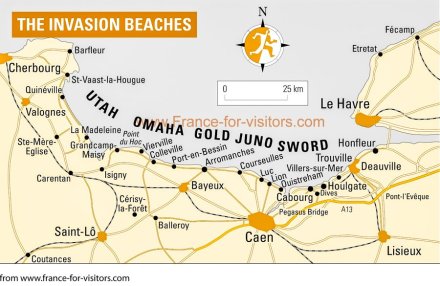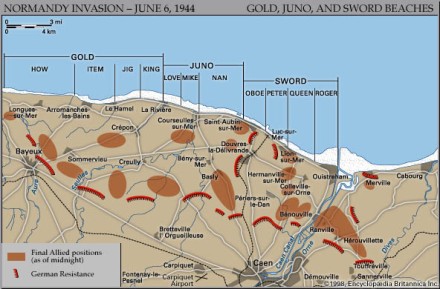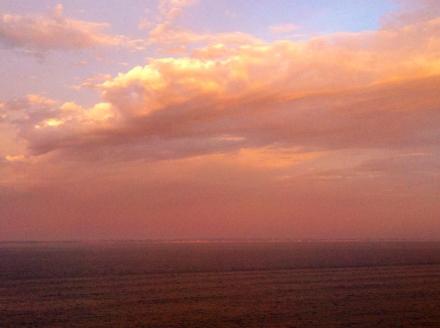The charming Spitfire and Hurricane Memorial Museum at Manston, Kent, might be based on what remains of one of the most important Battle of Britain airfields but also commemorates a much less celebrated period of World War 2.

The Manston Hurricane – a remarkable machine in unique surroundings
Alongside the remaining airfield buildings, all crammed with artefacts and information, are the modern, purpose-built homes of the Museum’s Spitfire Mk.XVI and its Hurricane Mk.IIc, the latter representing the ill-fated Operation JUBILEE: the 1942 assault on Dieppe.
In fact the aircraft itself hadn’t been built when the British and Canadian forces were dashed against the defences of Dieppe. Hurricane LF751 was built at Langley in 1944 joined her first unit, No. 1681 Bomber Defence Training Flight, in April of that year. Soon she moved to No. 27 Operational Training Unit, where she would remain for the remainder of the war and some considerable years afterwards.
When the RAF laid the foundations of its Battle of Britain Memorial Flight, it turned to 27 OTU for a Hurricane and selected LF363 from the stores. Her sister aircraft, including LF751, were meanwhile picked clean for usable spares to maintain their airworthy sister until it was decided that a Hurricane was needed to stand guard over the gates of RAF Bentley Priory – the nerve centre of RAF Fighter Command and the defence of Britain in 1940.

BBMF’s LF363 was revived with parts from the Manston Hurricane
It was for this task that LF751 was refurbished – although by the time that work was completed, there were more Mk.IId parts on her than original Mk.IIc. Nevertheless she spent almost 30 years standing outside the iconic building from which Dowding and Park commanded their celebrated defence through the summer of 1940.
By the mid-1980s only two genuine Hurricanes remained as gate guardians: LF751 at Bentley Priory and LF738 at RAF Biggin Hill. Neither of them would have survived such exposure to the elements much longer, and were thus withdrawn in favour of plastic replicas. Remarkably, given their timber, canvas and lightweight metal construction, both aircraft were considered to be restorable and were thus transferred to the Medway Aircraft Preservation Society (MAPS) for their respective overhauls in mid-1985.
Completely stripped down, the rebuilding of LF751 was to take MAPS some 22,000 man hours and cost some £18,000. In order to complete the build, parts were sourced from across Britain as well as Canada and Germany, including a control column previously fitted to a Hurricane that had crashed at West Malling in September 1940.
While the long road to restoration was underway, the research began to give the finished product a suitable new identity – LF751 having had a relatively quiet wartime life. It was eventually decided to give her the markings of Mk.IIc BN320, which carried the code FT-A while assigned to of the famous ‘Fighting Cocks’ – No. 43 Squadron – in early 1942.
The real BN320 had been the personal mount of Squadron Leader Danny Le Roy Du Vivier, DFC and bar, Croix de Guerre (Belge), a Belgian pilot. As well as her standard camouflage, this particular aircraft had worn a colourful collection of badges beneath the cockpit – namely the RAF Ensign, the Belgian flag and the black and white chequers of 43 Squadron.
Sqn Ldr Du Vivier was a noted Hurricane ‘ace’ who had joined his unit in August 1940, after escaping from occupied Belgium along with eight comrades and travelled to Britain via Gibraltar by boat. He shot down his first enemy aircraft on August 16 – a Junkers Ju87 – but was himself shot down in flames on September 2, baling out to land in the grounds of a girls’ school in Sidcup. Several girls arrived at the scene bearing shovels and pitchforks and du Vivier chose to play dead until the police arrived, lest his strong Brussels accent be mistaken for German.
After recovering from his injuries, Du Vivier rejoined 43 Squadron and would stay there for a remarkable total of 27 months, rising from Pilot Officer to Squadron Leader. In May 1942 he caught and shot down a Ju88 reconnaissance aircraft some 50 miles off the coast near Newcastle at the helm of BN320. Flying at 30,000ft to make his ‘kill’ – an almost unprecedented altitude for a Hurricane on active service – BN320 was damaged by return fire but swiftly patched up.
She flew again with du Vivier in the Dieppe raid of August 19 1942, this time at low altitude flying close air support to the landing troops. Leading by example, du Vivier flew four sorties that day and returned each time with significant damage to BN320 – ensuring that this day was to prove her last on active service. It is fair to say that in her few months of front-line service, the real BN320 gave her all for the cause, and was an aircraft well worth commemorating.
So it was that with all due ceremony, LF751 in her new guise of BN320 was handed over to the RAF at an impressive ceremony at Rochester Airport on April 22 1988. A flypast by the Battle of Britain Memorial Flight (including LF363) and a Phantom F-4 of 43 Squadron gave a fitting salute before the completed Hurricane entered her new home in Manston’s evocative museum, where she remains to this day.






























